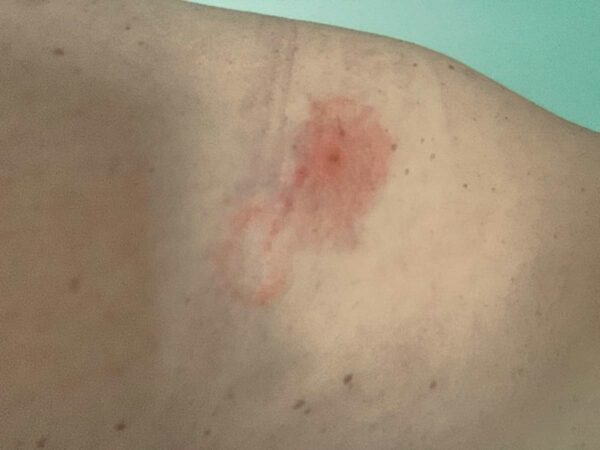
Mysterious Bug Bites Reported — Arlington residents are against dealing with red and intensely itchy bug bites, the cause of which is so far unclear. One theory is that last year’s scourge of oak mites are back. [Facebook, WUSA 9]
Catalytic Converter Thefts in Fairlington — “A resident has reported that the catalytic converter on their Toyota Prius was stolen during the night March 21, 2022. The converter was physically cut away from the vehicle. There have been 7 similar thefts of catalytic converters reported from the Fairlington neighborhoods.” [Twitter]
Man Pistol Whipped By Intruder — “2000 block of S. Kenmore Street. At approximately 2:15 p.m. on March 22, police were dispatched to the report of trouble unknown. Upon arrival, it was determined that the victim was inside his residence when the three known suspects forced entry inside and struck him with a firearm. The victim then deployed pepper spray and the suspects fled the scene. The victim sustained non-life threatening injuries and was transported to an area hospital for medical treatment. Warrants were obtained for one suspect.” [ACPD]
Gym in Crystal City Unionizes — From Washingtonian’s Andrew Beaujon: “Movement Crystal City is the US’s first unionized climbing gym. We wrote about this place when it was called Earth Treks.” [Twitter, Twitter]
Help for Arlington’s Ukrainian Sister City — “That partnership, which came to fruition after years of advocacy by Sonevytsky, has mostly focused on cultural and professional exchanges. But the unprovoked Russian attack on Ukraine last month changed all that. Now, the Arlington Sister City Association and the volunteer group that runs the Ivano-Frankivsk relationship are focused on a new mission: helping send humanitarian aid to their partner city and educating Arlington residents about their community’s ties to a place now in a war zone.” [WAMU]
Reminder: Free Observation Deck in Rosslyn — “If you’re looking for views of the blossoms at the Tidal Basin and beyond, head to The View of DC, located at 1201 Wilson Boulevard! This 360-degree observation deck is open daily from 9 a.m. to 5 p.m. (with evening hours until 9 p.m. on Mondays!) and admission is free with a valid government ID.” [Rosslyn BID]
Injunction Against Va. Mask-Optional Law — “Preliminary injunction granted by the federal court preventing defendants from enforcing EO 2 and SB 739 (the mask-optional law) in schools where the plaintiffs & their children are enrolled.” [Twitter, Washington Post, WJLA]
Pappy Is Back at Virginia ABC — “Good news bourbon lovers: Virginia’s annual Pappy Van Winkle lottery is back — this year with two types of Van Winkles… Anyone 21 and over with a valid Virginia driver’s license (you have to prove it when you show up to purchase) can enter the lotteries on Virginia ABC’s website from Wednesday, March 23 until Sunday, March 27 at 11:59pm.” [Axios]
It’s Thursday — After early morning storms, light rain throughout much the day. High of 66 and low of 58. Sunrise at 7:06 am and sunset at 7:25 pm. [Weather.gov]


